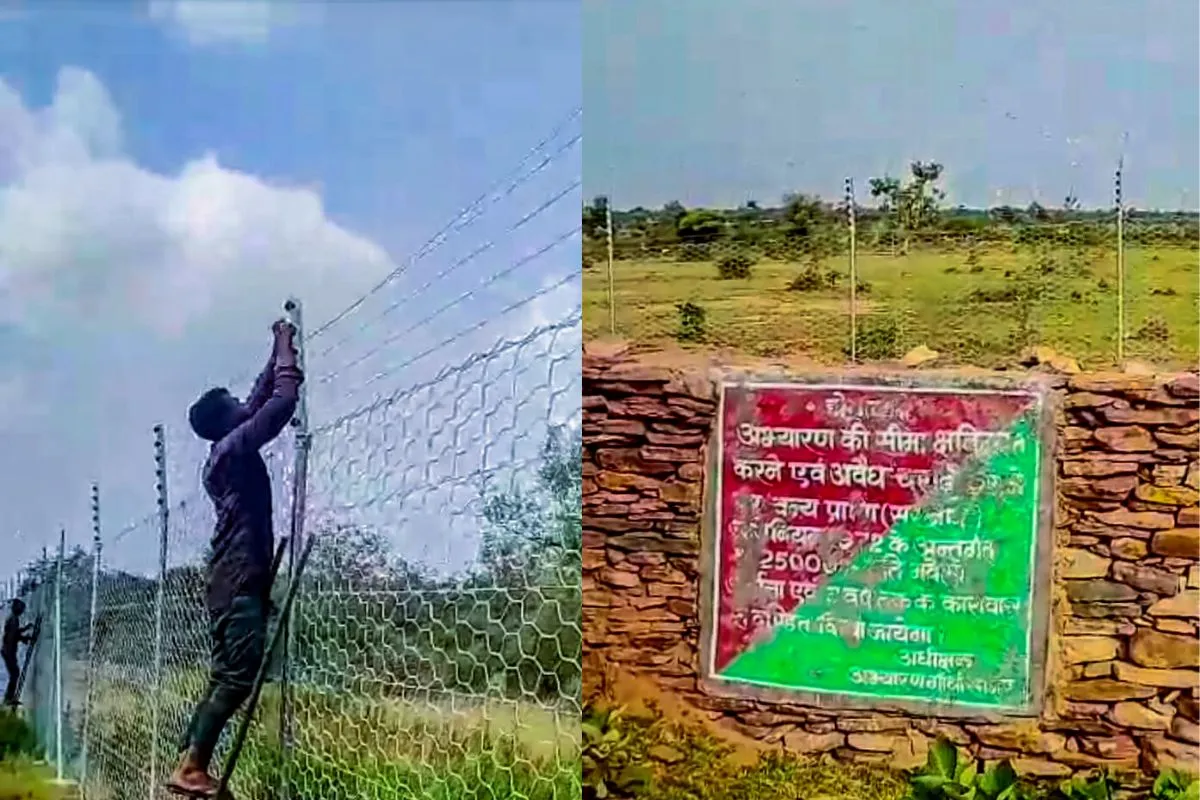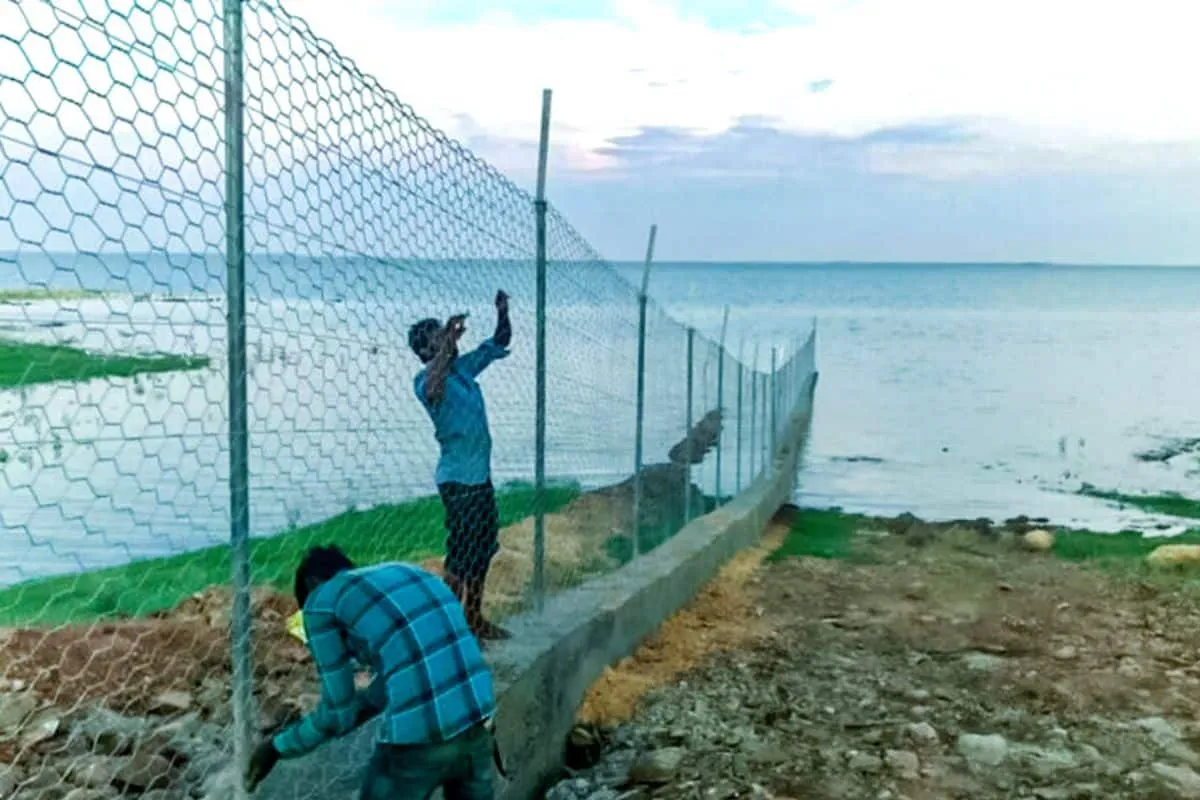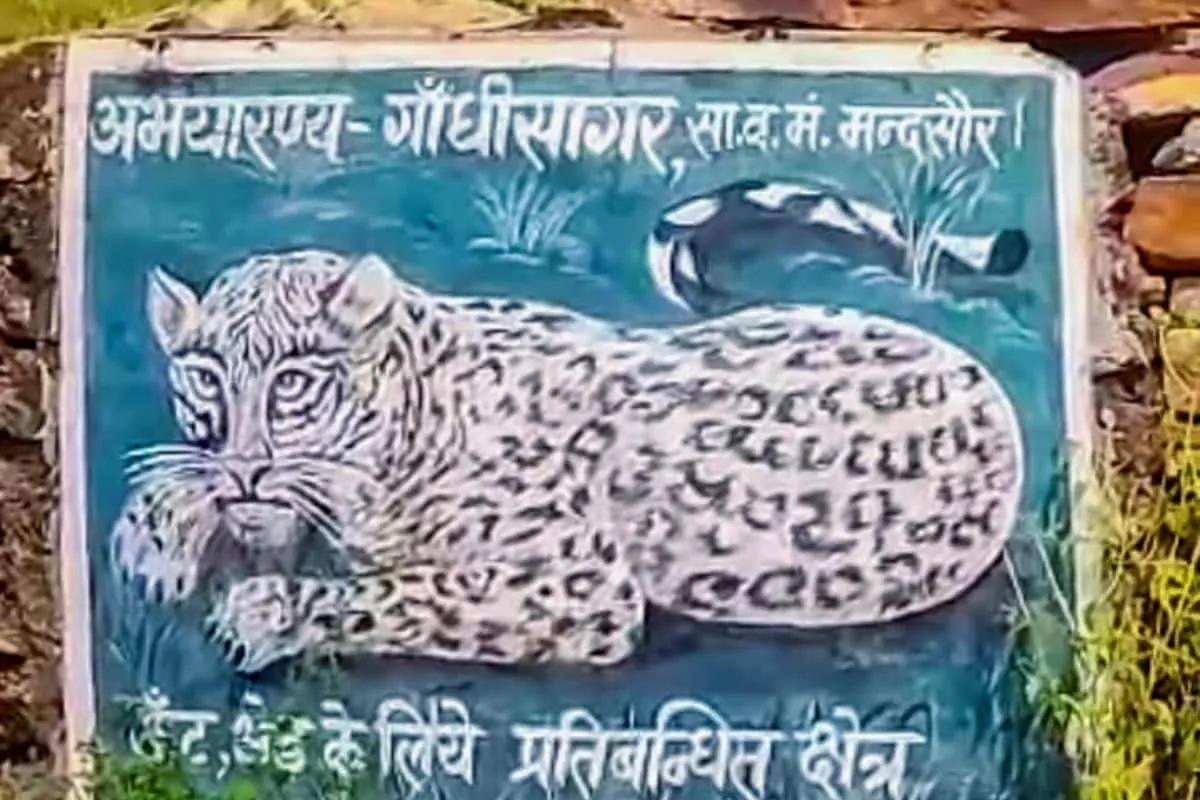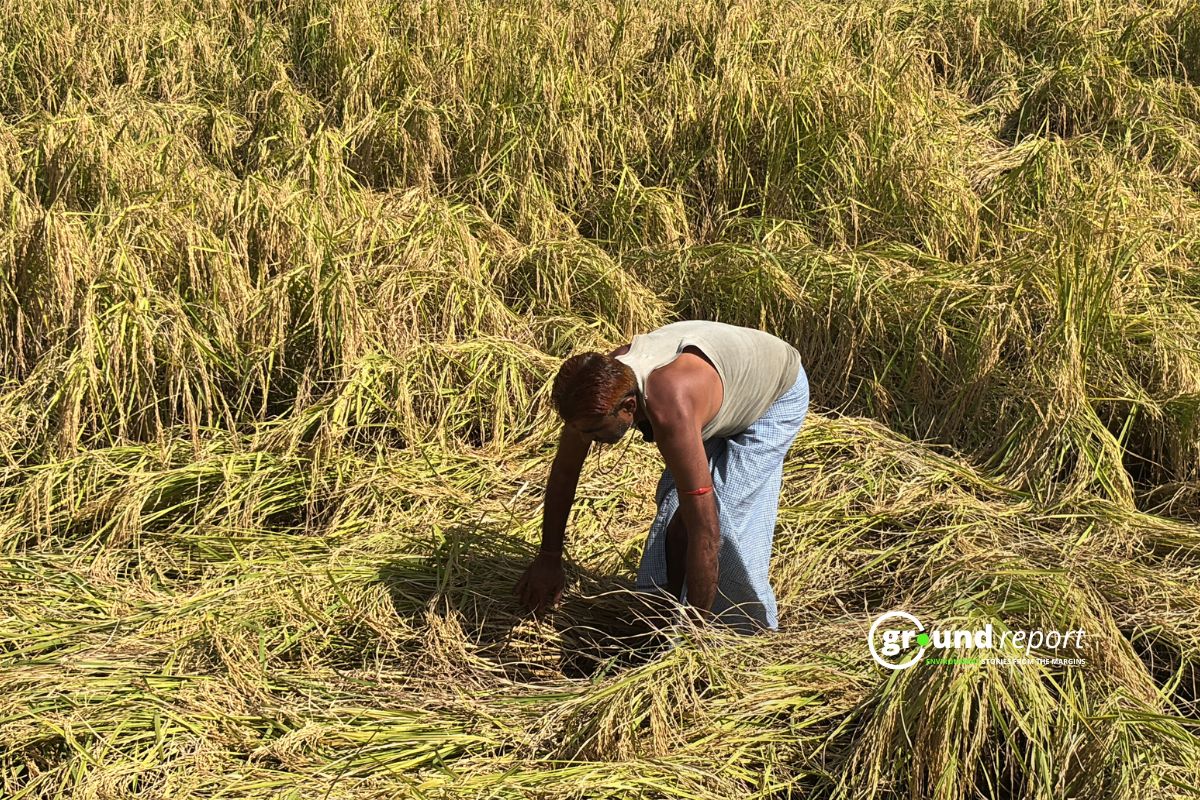“The place where our cows, goats and buffaloes used to graze is being covered by the forest department through stone walls and wire-fencing and it is said that all this is being done to settle the Cheetahs here. Due to this, clouds of crisis are looming over our livelihood.”
Dinesh Gurjar (30 years), a milk businessman by profession, and resident of Chenpuriya block village, said.

Gandhi Sagar Sanctuary will be the second home for Cheetahs
India lost its indigenous cheetah in 1952, 75 years ago. However, in December 2022, Prime Minister Narendra Modi reintroduced the species by importing eight cheetahs from Namibia and relocating them to Kuno National Park in the Sheopur district of Madhya Pradesh. This sparked an ongoing process of importing Cheetahs from South Africa and Namibia, with a total of 20 now successfully relocated. A further shipment of 10 Cheetahs is anticipated for this year and these animals will be resettled in the Gandhi Sagar Forest Sanctuary located on the border of Neemuch and Mandsaur districts in Madhya Pradesh. Currently, a 67-square-kilometre enclosure is under construction in the sanctuary at Rs. 30 crores. According to the Forest Department officials, this project is 90% complete.
The village of Chenpuriya (Ravalikudi) is positioned some distance off the road, forming part of the Gram Panchayat Chenpuriya block in the Manasa tehsil of Neemuch district. The administrative decision consolidated three separate villages; Chenpuriya, Ravalikudi, and Pathar into the now unified Chenpuriya block. Approximately 452 families comprising around 2500 residents inhabit the village. Livelihoods primarily revolve around animal husbandry and agriculture, with each resident typically owning around 70 to 100 animals, predominately cows but also buffaloes and goats. The number of cows significantly outweighs that of buffaloes and goats at over 25,000. Dairy production is high, with daily yield surpassing five or six thousand litres. However, opposition is growing among residents over the newly implemented Cheetah project, as it threatens their livelihood.

Dinesh Gurjar further says “The government is opening cow sheds in every gram panchayat of the state, and is also investing crores of rupees. They are running various schemes for the welfare of cows by spending huge amounts of money. But, on the other hand, they are not concerned about our cattle(s).” Taking his point further, his wife Sudhabai says that
“There are five people in my family (mother, husband and two children) and our livelihood is linked to the milk business. We have more than 80 cattle, but the maximum is 55 cows. If they do not get food, my family will also face the possibility of dying of hunger along with them.”
The Forest Department is breaking its promise
75-year-old Kajri Bai sitting on an earthen stool outside her house says,
“Why do we poor people have to pay the price in the name of development? Last time, 50 years ago, during the construction of Gandhi Sagar Dam, we had to leave everything. Our land came into the submergence area and the administration displaced us here. We are earning our living by doing agricultural work and dairy business. Now again the pastures of our cattle are being encroached upon by the government in the name of Cheetahs. If the government does not leave space for our cattle to eat, we will once again have to face the brunt of displacement, which we do not want.”
Taking his point forward, 38-year-old Savra Gurjar says
“Our family has been living here for 50 years. We have no objection of any kind to the Cheetah Project. Our only demand is that when our ancestors were displaced here, the forest department had reserved land for grazing for our cattle. These reserved compounds are numbered 35, 36, 40, 41, 42, and 43, and have been reserved for grazing by the Rampura range of the Neemuch forest division. Now for the Cheetah Project, the forest department has wrongly demarcated the land of the said reserved compound and is covering it by building a wall of stones and wire-facing, which is wrong.”
Supporting his point, Rural Samrat Dixit, 33, says that the villagers have written letters to the Chief Minister and the Governor regarding their problems and have submitted a memorandum to the District Collector of Neemuch, making them aware of their problems. Along with this, they have also protested, and even after this, their problem remains the same.

Here, Gandhi Sagar Sanctuary, Superintendent Rajesh Mandawalia says that
“An agreement has been reached with the forest committees and with the consent of the villagers, wire-fencing work is being done on a war footing and solar-powered electric fencing is being done on 27 km length covering 67 km area. They say that through forest committees, 300 hectares of land is being released for more than 25 thousand cattle of about 5 thousand villagers of village Chenpuriya.”
Insufficient land left for pasture
Samrat Dixit says
“There were talks with forest department officials through forest committees, they agreed to give up 300 hectares of land. However, no consensus was reached because 300 hectares of land is very less for more than 25,000 cattle. On this, he said that we can leave about 1080 hectares of land in three compounds out of 6 compounds, but we demand that the forest department should leave at least so much land so that our cattle can graze easily. We are talking about, more than 25000 cattle cannot be accommodated properly in that much land. About 3000 hectares of land should be left by the forest department for cattle.”
Aseem Srivastava, Chief Wildlife Warden of the Madhya Pradesh Forest Department, stated that the contested land is not within the sanctuary but rather is a part of the broader forest division in Neemuch. He declared that they are currently installing chain-link fencing around all areas except the disputed one. Negotiations with residents and forest committees for the contested land are underway, and Srivastava assures that a resolution will be reached soon.

Where has project work reached?
Mandsaur Forest Division DFO Sanjay Raikhere said that,
“A habitat for Cheetahs is currently under construction at one end of the Chambal River in Gandhi Sagar Sanctuary. This involves digging 12,600 pits and setting up iron pipes every three meters. There will also be a wire fence and a high wall stretching 28 kilometres in length and reaching a height of 10 feet. In addition, a solar system installed 3 feet above the wall will function as a deterrent for any Cheetahs attempting to cross the fence as it can deliver an electric shock. The impact will be felt by the Cheetahs.“
He said, that Gandhi Sagar Forest Sanctuary is spread over 369 square kilometres, more than Rs 17 crore 70 lakh has been spent in installing a mesh in the 28-kilometre long enclosure, while cameras have also been installed in the forest area.
Earlier it was to come from Kuno, now Cheetahs will come from Africa
DFO Sanjay Raikhere said
“Previously, the department had planned to relocate six Cheetahs from Kuno to the sanctuary, however, the plan has been altered. Instead, ten leopards will be brought in from South Africa during March-April. Before this, a South African delegation will assess the sanctuary’s preparations in February. Cheetah rehabilitation and other forest officials express satisfaction with the preparations for cheetahs at Gandhi Sagar Sanctuary and appreciate the presence of chinkara herds here. The main diet of leopards is plentiful in this area. Moreover, a water source is established every 2 kilometers within the enclosure for the leopards and other wildlife. To facilitate this, water will be pumped from Chambal forest areas around Karanpura and Chairasigarh. Four water tanks each with a capacity of 10,000 litres are being constructed at both sites, resulting in a total of eight tanks within the enclosure. This will ensure adequacy of water supply in the area.“
Keep Reading
Indian agriculture household earns just Rs. 10,218 in a month: Govt
Post-harvest losses still high, reveals data shared in Lok Sabha
Khadi Haat village’s power-free wastewater treatment solution and more
Support us to keep independent environmental journalism alive in India.
Follow Ground Report on X, Instagram and Facebook for environmental and underreported stories from the margins. Give us feedback on our email id greport2018@gmail.com.
Don’t forget to Subscribe to our weekly newsletter, Join our community on WhatsApp, and Follow our YouTube Channel for video stories.








